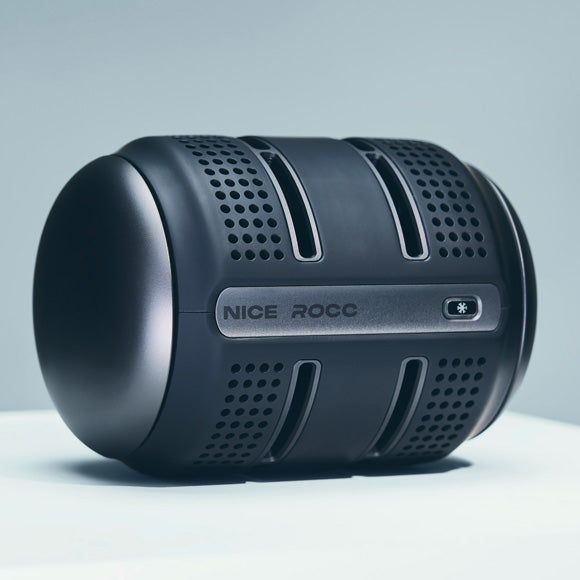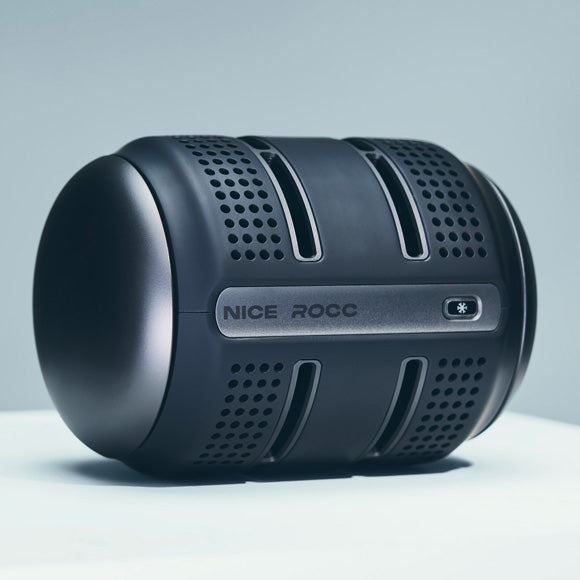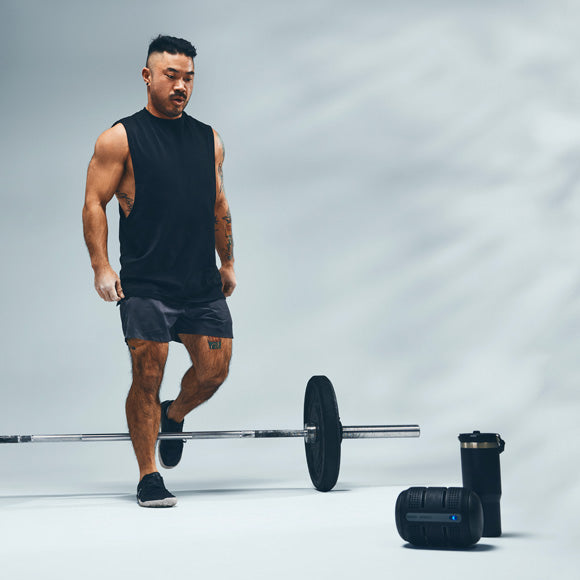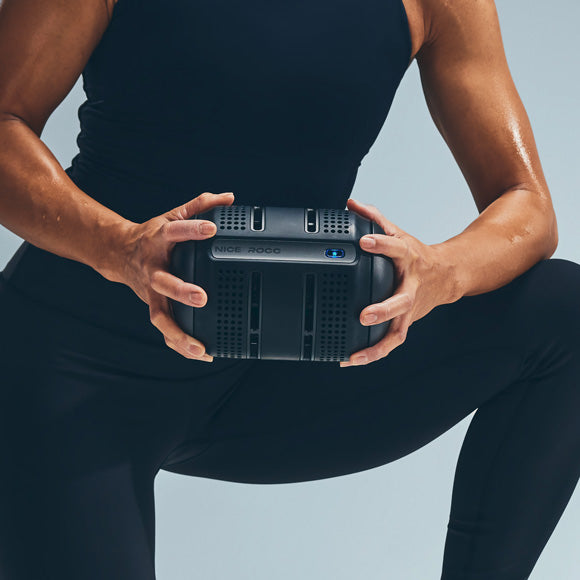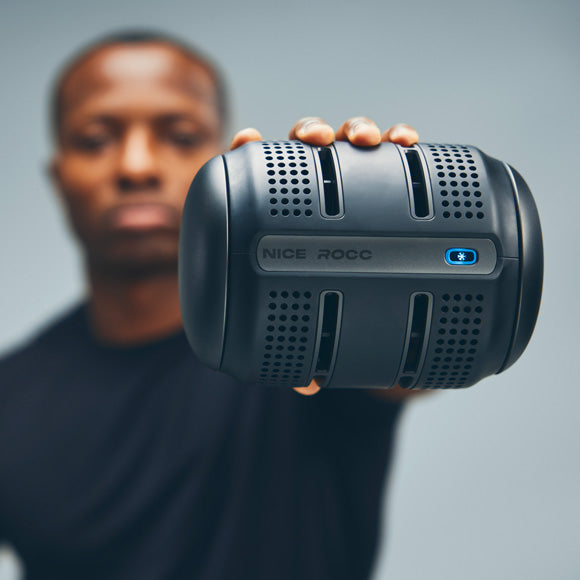Heat can be an athlete’s silent adversary. Whether you’re grinding through heavy squats, tackling long-distance runs, or mixing explosive CrossFit workouts, excess heat buildup threatens your endurance, power output, and ultimately your performance. Over the last 10 years, Palm Cooling has emerged as a powerful strategy to curb overheating. By leveraging specialized blood vessels in the hands, palm-cooling methods quickly reduce core temperature, allowing you to sustain energy, complete more total work, and achieve new strength milestones.
This guide distills the science of palm cooling, outlines the must-have features of an effective device, and presents a quick checklist to help you navigate the buying process. We’ll also compare simple, do-it-yourself (DIY) approaches to premium, advanced solutions—so you can decide which method aligns with your training style and budget. Let’s explore how to spot the best product for your needs and maximize the heat-dispelling magic of your palms.
Why Palm Cooling Matters for Strength Training
Heat’s Impact on Strength and Endurance
Muscles generate tremendous heat during intense exertion, causing enzyme slowdown and accelerated fatigue once core temperature climbs above approximately 40°C (104°F). A 2014 Journal of Applied Physiology study revealed how this “heat ceiling” inhibits the critical enzymes (like those governing ATP production) and drives the body to divert blood away from muscles to aid in cooling.
The Magic of AVAs
Your palms contain arteriovenous anastomoses (AVAs)—special conduits that allow cooled blood to bypass narrow capillaries and flow rapidly back to the core. By chilling the palms at a moderate 50–60°F, you reduce core heat without risking vasoconstriction (the cold-shock reflex that hinders blood flow). Research in the European Journal of Applied Physiology (2015) demonstrated that athletes practicing palm cooling completed more repetitions at a fixed load and maintained better overall power output.
Why Strength Athletes Benefit
-
Delayed Muscle Failure: By managing temperature between sets, you mitigate performance drop-off in later sets.
-
Higher Training Volume: Steadier ATP production means more total reps, sets, or heavier loads.
-
Shorter In-Session Recovery: Rapidly removing excess heat helps the body deliver nutrients and oxygen to working tissues.
Key Factors for Choosing a Palm Cooling Device
1. Temperature Precision
Why 50–60°F?
Most studies cite 50–60°F (10–15°C) as the ideal range. Below ~50°F, the risk of vasoconstriction increases, halting efficient heat exchange. Above ~60°F, the cooling effect may be too mild to keep muscle enzymes in their optimal temperature zone.
What to Look For
-
Consistent temperature regulation in that moderate range.
-
Avoid ice-only designs that frequently drop below 50°F.
-
A stable cooling mechanism that prevents random spikes or drops in temperature.
2. Conduction and Material Choice
K Values in Focus
Materials with high thermal conductivity (K value) transfer heat faster. For instance:
-
Copper: ~386 W/m·K
-
Aluminum (6061): ~167 W/m·K
-
Water: ~0.59 W/m·K
-
PVC/Plastic: ~0.2 W/m·K
High K values allow heat from your palms to flow rapidly into the cooling device, ensuring ongoing heat extraction. Low K-value materials (like plastic) slow heat transfer, creating a thermal barrier—a warm layer that forms on the device’s surface and impedes continued cooling.
What to Look For
-
Surfaces made from copper, aluminum, or advanced heat-pipe or solid-state technology.
-
Solid, direct contact (no thick insulation or slick coatings).
-
Evidence of thoughtful engineering to address the thermal barrier effect.
3. Continuous Heat Removal
Beating the Thermal Barrier
Even if a material starts out cold, it quickly warms unless there’s a mechanism to continuously remove that absorbed heat. Stagnant cold water can develop a warm “pocket” around your palm, drastically reducing heat exchange, a phenomenon the competitor calls the “dreaded thermal barrier.”
What to Look For
-
Solid-state electronics (like Peltier modules) that actively shuttle heat away from the contact surface.
-
Circulating fluid or advanced conduction systems (e.g., copper heat pipes) that move heat to another reservoir.
-
Minimal reliance on still water, gels, or ice that can’t actively whisk heat away.
4. Portability and Battery Life
Durability for Your Environment
Whether you’re in a pro gym, an outdoor track, or a home garage, a great palm-cooling device shouldn’t disrupt your workflow. Battery-powered systems and minimal need for refilling ice are essential, especially if you plan to cool between sets or mid-competition.
What to Look For
-
At least 1–2 hours of continuous operation on a single charge.
-
Lightweight build (~2–3 kg or less) for easy transport.
-
Rugged design—machined aluminum, ABS plastic, or other high-strength materials.
5. Comfort and Ergonomics
Haptic or Visual Timers
Palm cooling typically requires holding the device for 1–2 minutes, multiple times in a workout. Ease of handling, minimal dripping or condensation, and built-in timers make usage smoother.
What to Look For
-
Ergonomic shape that fits different hand sizes.
-
A timer—either haptic feedback or a visual display—for maintaining consistent contact intervals.
-
Surfaces that don’t become slippery or uncomfortable after repeated use.
6. Warranty and Support
Long-Term Investment
Palm-cooling devices can represent a significant financial investment for serious athletes. Check brand reputation, warranty length, and the ease of contacting customer support if you need repairs or troubleshooting.
What to Look For
-
1–2 year or longer warranty.
-
Readily accessible documentation or tech support.
-
Transparent build materials and manufacturing info.
DIY vs. Advanced Solutions
DIY Options
For a budget-friendly approach, you could try:
-
Aluminum or Copper Water Bottle: Fill with ~50–60°F water, agitate frequently to prevent the thermal barrier.
-
Gel Packs: If pre-chilled to just above 50°F, they can provide short bursts of cooling. But they warm quickly.
Pros: Low cost, minimal setup.
Cons: Temperature consistency is hard to maintain; frequent refills or refrigeration needed. Easy to slip below 50°F and cause vasoconstriction.
Advanced Devices
Premium devices—like the NICE ROCC from NICE Recovery Systems or competitor solutions with heat pipes—use solid-state or specialized conduction methods to sustain stable 50–60°F contact surfaces.
Pros: Continuous heat removal, minimal drift, no dripping or meltdown.
Cons: Higher upfront cost, may require charging if it’s battery-based.
Who Should Choose Advanced?
-
Athletes training in extended sessions or requiring reliable performance mid-competition.
-
Those wanting more reps, heavier lifts, or faster recovery without constant tinkering with ice or water.
Spotlight on Solid-State Cooling
Peltier Modules
Solid-state devices like NICE ROCC draw heat from one side to the other, powered by electricity. Since there’s no ice to melt or water to circulate, the cooling surface remains consistently in the optimal 50–60°F range for as long as the battery lasts.
Advantages
-
No Thermal Barrier: The module continuously evacuates heat away, eliminating that warm micro-layer on the palm’s surface.
-
Portability: Typically weighs ~2 kg, making it easy to move around the gym or track.
-
Precision: Perfect for repeated short intervals between sets or during halftimes without losing cooling potential.
For deeper insight into how these advanced solutions compare to traditional methods, check out NICE Recovery Systems’ additional resources.
Why Palm Cooling Is Vital for Strength Training
Sustaining Power Output
Heat accumulation often ruins your final sets. By quickly dropping muscle and core temperature, you extend the window for explosive power. A 2019 International Journal of Sports Physiology and Performance study showed improved repeated sprint and lift capacity among athletes using moderate-temperature palm cooling.
Shorter Rest Intervals, More Reps
When your core temperature rises too high, rest intervals must lengthen to allow partial cooling. By controlling the temperature with palm cooling, you recover faster at the same rest duration, or you can maintain short rest and still preserve rep quality.
Enhanced Psychological Edge
Physical comfort impacts mental focus. Overheating can cloud judgment, amplify fatigue perception, and reduce motivation. Maintaining comfortable temperature levels helps you stay locked in for skill execution and consistent form under heavy loads.
Real-World Scenarios and Usage Tips
1. Mid-Set Recovery
-
How It Works: After a heavy set (e.g., squats or bench press), place your palms on a device at ~50–60°F for about 60–90 seconds.
-
Benefit: Drops muscle temperature just enough to preserve ATP production for the next set.
2. Intervals and Circuit Training
-
How It Works: Incorporate 30–60-second palm-cooling breaks after each high-intensity round, especially if the workout involves minimal rest.
-
Benefit: Maintains consistent performance across multiple intervals.
3. Post-Workout Downregulation
-
How It Works: Conclude with a 1–2-minute palm-cooling session.
-
Benefit: Lowers muscle inflammation, aiding in faster next-day readiness.
4. Competition Scenarios
-
How It Works: For team sports with halftime (soccer, basketball) or short breaks (tennis), apply palm cooling to sustain second-half or late-match performance.
-
Benefit: Offset heat stress, maintain sharper reflexes and speed.
Common Palm Cooling Myths
-
“Any Cold Will Work.”
-
Reality: If the temperature dips below ~50°F, vasoconstriction hinders blood flow, limiting the cooling effect.
-
“It’s Only for Endurance Athletes.”
-
Reality: Strength athletes face significant overheating too, especially during repeated heavy sets.
-
“Ice Baths Are Better.”
-
Reality: Whole-body ice baths can shock the system and hamper blood flow to the muscles. Targeted palm cooling at a moderate temperature avoids these pitfalls.
-
“It’s a Luxury, Not a Necessity.”
-
Reality: For anyone serious about pushing limits in training or competition, heat management can be a game-changer—potentially the difference between plateauing and hitting new records.
FAQ Section
Q: Is Palm Cooling Only Beneficial in Hot Climates?
A: No. Even in cool environments, high-intensity exercise spikes core temperature. Palm cooling remains valuable for managing heat generated by your own body.
Q: How Long Should a Palm Cooling Session Last?
A: Most protocols suggest 1–2 minutes between strength sets. In extreme heat stress, 5–10 minutes may be warranted to bring core temperature down effectively.
Q: Does Palm Cooling Eliminate the Need for Hydration?
A: No. While palm cooling is a potent method for heat removal, hydration is essential for overall thermoregulation and metabolic function.
Q: What If My Palms Get Too Cold or Numb?
A: That’s a sign the device is dipping below ~50°F, triggering vasoconstriction. Look for solutions engineered to maintain the moderate 50–60°F range.
Q: Can a DIY Water Bottle Setup Work?
A: It can, but managing consistent temperatures and avoiding a thermal barrier is challenging. Frequent refills may be needed, and you risk going too cold or warming up too quickly.
Q: How Does the NICE ROCC Compare to Ice Packs?
A: The NICE ROCC uses solid-state technology to hold a stable 50–60°F, avoiding the freeze-thaw cycle and water dripping of ice packs. It provides continuous cooling power without constant monitoring.
Palm-Cooling Checklist for Buyers
-
Temperature Range
-
Must stay at 50–60°F to maximize cooling without vasoconstriction.
-
Thermal Conductivity
-
High K-value materials (copper, aluminum) or advanced conduction to avoid warm “thermal barriers.”
-
Continuous Heat Removal
-
Solid-state electronics or circulating systems that actively pull heat away.
-
Battery Life & Portability
-
1–2 hours of runtime minimum; designed for easy transport.
-
Comfort & Ergonomics
-
Shapes that fit the palm securely, minimal condensation, and optional timers or haptics.
-
Warranty & Support
-
At least one year of coverage, with responsive customer service.
Bringing It All Together
Palm Cooling is backed by robust scientific evidence showing enhanced workout capacity, better strength retention, and reduced downtime. By controlling heat load through specialized blood vessels in your palms, you maintain essential enzyme function longer, fueling muscular contractions and delaying the cascade of fatigue that curbs your gains.
But not all palm-cooling solutions are created equal. Ice packs quickly dip below 50°F, risking vasoconstriction. DIY setups can struggle with consistent temperatures or produce thermal barriers. Advanced devices—like NICE ROCC—strike the perfect balance, leveraging high conduction materials and solid-state cooling for stable, effective heat removal.
Whether you’re a recreational athlete or a competitive professional, investing in a reliable palm-cooling product can prove transformative. By following the guidelines laid out in this buyer’s guide and referencing the convenient Palm-Cooling Checklist, you’ll identify the right device to help unlock new personal records, sustain higher training volume, and keep your body at its performance-ready best.
External References
-
Journal of Applied Physiology (2014). Heat-Induced Enzyme Limitations in Muscle Performance.
-
European Journal of Applied Physiology (2015). Glabrous-Skin Cooling for Improved Repetitions and Power Output.
-
International Journal of Sports Physiology and Performance (2019). Targeted Cooling in Endurance and Power Events.
-
Strength & Conditioning Journal (2021). Review of Palm Cooling Interventions for Delayed Fatigue.
(Disclaimer: Always consult with a healthcare professional before making significant changes to your training or recovery protocol. Individual results may vary based on fitness level, environmental conditions, and personal health.)
